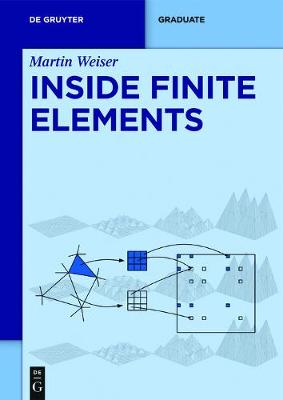de Gruyter Textbook
3 total works
This book deals with the general topic "Numerical solution of partial differential equations (PDEs)" with a focus on adaptivity of discretizations in space and time. By and large, introductory textbooks like "Numerical Analysis in Modern Scientific Computing" by Deuflhard and Hohmann should suffice as a prerequisite. The emphasis lies on elliptic and parabolic systems. Hyperbolic conservation laws are treated only on an elementary level excluding turbulence.
Numerical Analysis is clearly understood as part of Scientific Computing. The focus is on the efficiency of algorithms, i.e. speed, reliability, and robustness, which directly leads to the concept of adaptivity in algorithms. The theoretical derivation and analysis is kept as elementary as possible. Nevertheless required somewhat more sophisticated mathematical theory is summarized in comprehensive form in an appendix. Complex relations are explained by numerous figures and illustrating examples. Non-trivial problems from regenerative energy, nanotechnology, surgery, and physiology are inserted.
The text will appeal to graduate students and researchers on the job in mathematics, science, and technology. Conceptually, it has been written as a textbook including exercises and a software list, but at the same time it should be well-suited for self-study.
Numerical Analysis is clearly understood as part of Scientific Computing. The focus is on the efficiency of algorithms, i.e. speed, reliability, and robustness, which directly leads to the concept of adaptivity in algorithms. The theoretical derivation and analysis is kept as elementary as possible. Nevertheless required somewhat more sophisticated mathematical theory is summarized in comprehensive form in an appendix. Complex relations are explained by numerous figures and illustrating examples. Non-trivial problems from regenerative energy, nanotechnology, surgery, and physiology are inserted.
The text will appeal to graduate students and researchers on the job in mathematics, science, and technology. Conceptually, it has been written as a textbook including exercises and a software list, but at the same time it should be well-suited for self-study.
All relevant implementation aspects of finite element methods are discussed in this book. The focus is on algorithms and data structures as well as on their concrete implementation. Theory is covered only as far as it gives insight into the construction of algorithms. In the exercises, a complete FE-solver for stationary 2D problems is implemented in Matlab/Octave.
Contents:
Finite Element Fundamentals
Grids and Finite Elements
Assembly
Solvers
Error Estimation
Mesh Refinement
Multigrid
Elastomechanics
Fluid Mechanics
Grid Data Structure
Function Reference
Contents:
Finite Element Fundamentals
Grids and Finite Elements
Assembly
Solvers
Error Estimation
Mesh Refinement
Multigrid
Elastomechanics
Fluid Mechanics
Grid Data Structure
Function Reference

